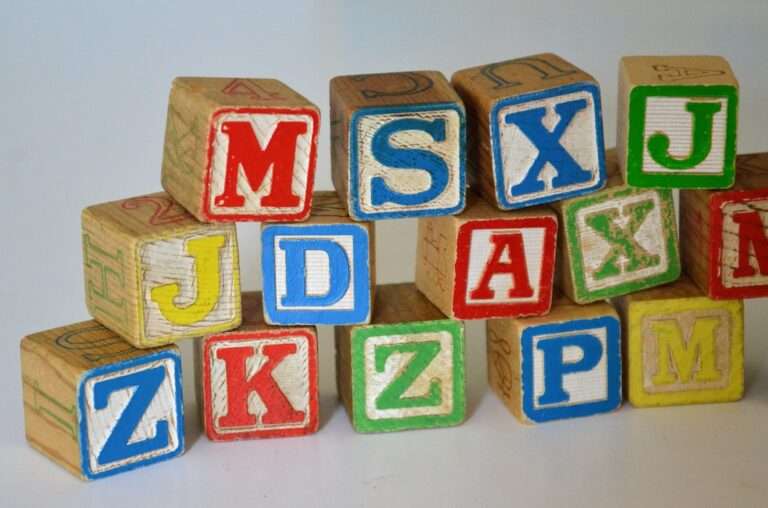The Hidden Secrets of Flag Symbolism

Flags have been used for centuries as symbols of identity, pride, and unity. They serve as powerful visual representations of nations, organizations, and ideologies. The colors, shapes, and symbols used in flag design convey meaning and evoke emotions. In this blog post, we will explore the fascinating world of flag symbolism and delve into the various elements that make up a flag’s design. By understanding the psychology behind color, the significance of shapes, the historical roots of flag symbolism, the use of animals and plants, religious and cultural symbols, geometric patterns, motifs and emblems, national identity, and the evolution of flag symbolism over time and across cultures, we can gain a deeper appreciation for the power of flags to represent identity and meaning.
The Power of Color: How Flag Colors Convey Meaning
Color plays a crucial role in flag design as it has the ability to evoke emotions and convey meaning. Different colors have different psychological effects on individuals. For example, red is often associated with passion, power, and energy. It can symbolize courage and strength. Blue is often associated with calmness, stability, and trustworthiness. It can symbolize loyalty and peace. Yellow is often associated with happiness, optimism, and warmth. It can symbolize joy and hope.
These psychological effects of color are utilized in flag design to evoke certain emotions or convey specific messages. For example, the American flag uses red to symbolize courage and valor, white to symbolize purity and innocence, and blue to symbolize perseverance and justice. The flag of Germany uses black to symbolize determination and strength, red to symbolize bravery and valor, and gold to symbolize generosity and wealth.
The Significance of Shapes in Flag Design
Shapes also play a significant role in flag design as they can convey meaning and symbolism. Different shapes have different associations and interpretations. For example, a circle is often associated with unity, eternity, and wholeness. It can symbolize harmony and perfection. A triangle is often associated with stability, strength, and balance. It can symbolize power and ambition. A cross is often associated with spirituality, faith, and sacrifice. It can symbolize hope and salvation.
These symbolic associations of shapes are utilized in flag design to convey certain messages or represent certain values. For example, the flag of Japan features a red circle in the center, known as the “rising sun.” This circle represents the sun and is a symbol of Japan’s national identity and spirituality. The flag of Switzerland features a white cross on a red background. This cross represents Christianity and is a symbol of Switzerland’s cultural heritage and values.
The Historical Roots of Flag Symbolism
The use of flags as symbols dates back thousands of years. Ancient civilizations such as the Egyptians, Greeks, Romans, and Persians used flags to represent their armies, kingdoms, and empires. These flags often featured symbols and motifs that represented the ruler or the nation.
Throughout history, flags have been used to represent different groups and ideologies. For example, during the French Revolution, the tricolor flag was adopted as a symbol of liberty, equality, and fraternity. The Nazi flag, with its black swastika on a red background, represented Adolf Hitler’s fascist ideology and the Nazi Party.
The Role of Animals and Plants in Flag Imagery
Animals and plants are often used in flag design to represent certain qualities or characteristics. Different animals and plants have different symbolic meanings. For example, an eagle is often associated with power, freedom, and courage. It can symbolize strength and leadership. A lion is often associated with bravery, nobility, and royalty. It can symbolize courage and authority. A maple leaf is often associated with beauty, strength, and endurance. It can symbolize unity and diversity.
These symbolic associations of animals and plants are utilized in flag design to convey certain messages or represent certain values. For example, the flag of the United States features an eagle, which represents freedom and strength. The flag of Singapore features a lion, which represents courage and leadership. The flag of Canada features a maple leaf, which represents unity and diversity.
The Importance of Religious and Cultural Symbols in Flags

Religious and cultural symbols are often used in flag design to represent the beliefs, values, and traditions of a nation or group. These symbols can have deep cultural and historical significance. For example, the crescent moon and star are often associated with Islam and are used in the flags of many Muslim-majority countries. The Star of David is a symbol of Judaism and is used in the flag of Israel.
These religious and cultural symbols are utilized in flag design to represent the identity and heritage of a nation or group. For example, the flag of Saudi Arabia features a green field with the Islamic creed written in Arabic script, symbolizing the country’s Islamic identity. The flag of India features a blue wheel, known as the Ashoka Chakra, which represents the teachings of Buddha and the country’s commitment to peace and non-violence.
The Use of Geometric Patterns in Flag Design
Geometric patterns are often used in flag design to create visual interest and convey meaning. Different geometric patterns have different symbolic meanings. For example, stripes are often associated with unity, harmony, and progress. They can symbolize strength and resilience. Stars are often associated with guidance, inspiration, and hope. They can symbolize ambition and aspiration.
These symbolic associations of geometric patterns are utilized in flag design to convey certain messages or represent certain values. For example, the flag of the United States features 13 alternating red and white stripes, representing the original 13 colonies that formed the nation. The flag of China features five yellow stars on a red field, representing the unity of the Chinese people under the leadership of the Communist Party.
The Hidden Meanings Behind Flag Motifs and Emblems
Motifs and emblems are often used in flag design to add visual interest and convey hidden meanings. These elements can have deep cultural and historical significance. For example, the fleur-de-lis is a stylized lily that has been used as a symbol of French royalty for centuries. It is used in the flag of Quebec, Canada, to represent the province’s French heritage.
These motifs and emblems are utilized in flag design to convey certain messages or represent certain values. For example, the flag of South Africa features a yellow, green, and black horizontal stripe with a green Y-shaped emblem in the center. This emblem represents the convergence of diverse cultures and the unity of the South African people.
The Influence of National Identity on Flag Symbolism
National identity plays a significant role in flag design as it shapes the symbols and colors used to represent a nation. Flags are often designed to reflect a country’s history, culture, values, and aspirations. For example, the flag of Italy features three vertical stripes of green, white, and red, representing the country’s agricultural heritage, peace, and courage.
Different countries use flags to represent their unique identities. For example, the flag of Japan features a red circle in the center, known as the “rising sun.” This circle represents the sun and is a symbol of Japan’s national identity and spirituality. The flag of Brazil features a green field with a yellow diamond in the center, representing the country’s natural resources and wealth.
The Evolution of Flag Symbolism Across Time and Space
Flag symbolism has evolved over time and across different cultures. Flags have adapted to reflect changing political and social contexts. For example, many countries have changed their flags to reflect shifts in political ideologies or changes in national identity. The flag of South Africa, for instance, was redesigned after the end of apartheid to represent the country’s new era of democracy and inclusivity.
Flags have also evolved to reflect the increasing globalization and interconnectedness of the world. Many flags now incorporate elements from other cultures or feature symbols that represent global values. For example, the flag of the European Union features a circle of 12 gold stars on a blue field, representing unity and solidarity among European nations.
The Future of Flag Symbolism: Trends and Innovations
Flag design is constantly evolving, with new trends and innovations emerging. One current trend is the use of minimalist designs, with simple shapes and bold colors. This trend reflects a desire for clean and modern aesthetics. Another trend is the use of digital technology to create dynamic and interactive flags. These flags can change colors or display animations, allowing for more creative and engaging designs.
Innovations in flag design are also being driven by advancements in materials and manufacturing techniques. For example, flags can now be made from lightweight and durable materials that are resistant to fading and tearing. This allows for more vibrant and long-lasting designs.
Flags are powerful symbols that represent identity, pride, and unity. The colors, shapes, symbols, animals, plants, religious and cultural symbols, geometric patterns, motifs and emblems used in flag design convey meaning and evoke emotions. By understanding the psychology behind color, the significance of shapes, the historical roots of flag symbolism, the use of animals and plants, religious and cultural symbols, geometric patterns, motifs and emblems, national identity, and the evolution of flag symbolism over time and across cultures, we can gain a deeper appreciation for the power of flags to represent identity and meaning. Flags are not just pieces of cloth; they are visual representations of who we are as individuals, communities, and nations.
If you’re fascinated by the hidden meanings behind symbols, you’ll love exploring the symbolism of the sun. In a related article on Symbolism Hub, “Symbolism: The Sun,” you’ll discover the profound significance that this celestial body holds in various cultures and belief systems. From representing life and vitality to symbolizing enlightenment and spiritual awakening, the sun has captivated humanity for centuries. Delve into this intriguing article to uncover the secrets and symbolism associated with the sun.
FAQs
What is flag symbolism?
Flag symbolism refers to the use of colors, shapes, and symbols on a flag to represent a country, organization, or group of people. These elements are often chosen for their historical, cultural, or political significance.
What are some common symbols found on flags?
Common symbols found on flags include stars, crosses, crescents, animals, and plants. These symbols often have cultural or historical significance to the country or group of people represented by the flag.
What do the colors on a flag represent?
The colors on a flag can have different meanings depending on the country or organization represented. For example, red often represents courage or revolution, while blue can represent freedom or loyalty. Green is often associated with nature or Islam, and yellow can represent wealth or the sun.
Why are flags important?
Flags are important because they serve as a symbol of identity and unity for a country or group of people. They can also represent important values and ideals, such as freedom, democracy, and justice.
What are some examples of hidden symbolism on flags?
Some examples of hidden symbolism on flags include the use of stars to represent the number of states or provinces in a country, or the use of colors to represent different ethnic or religious groups. Some flags also feature hidden messages or symbols that are only visible under certain conditions, such as when the flag is flown upside down.





